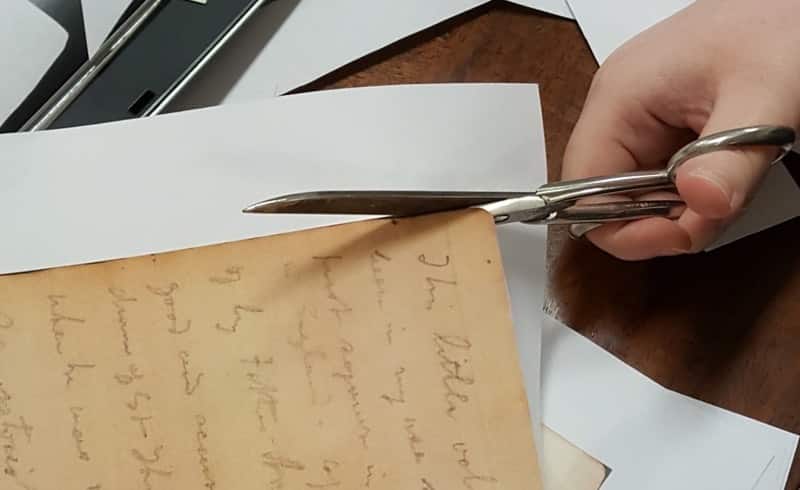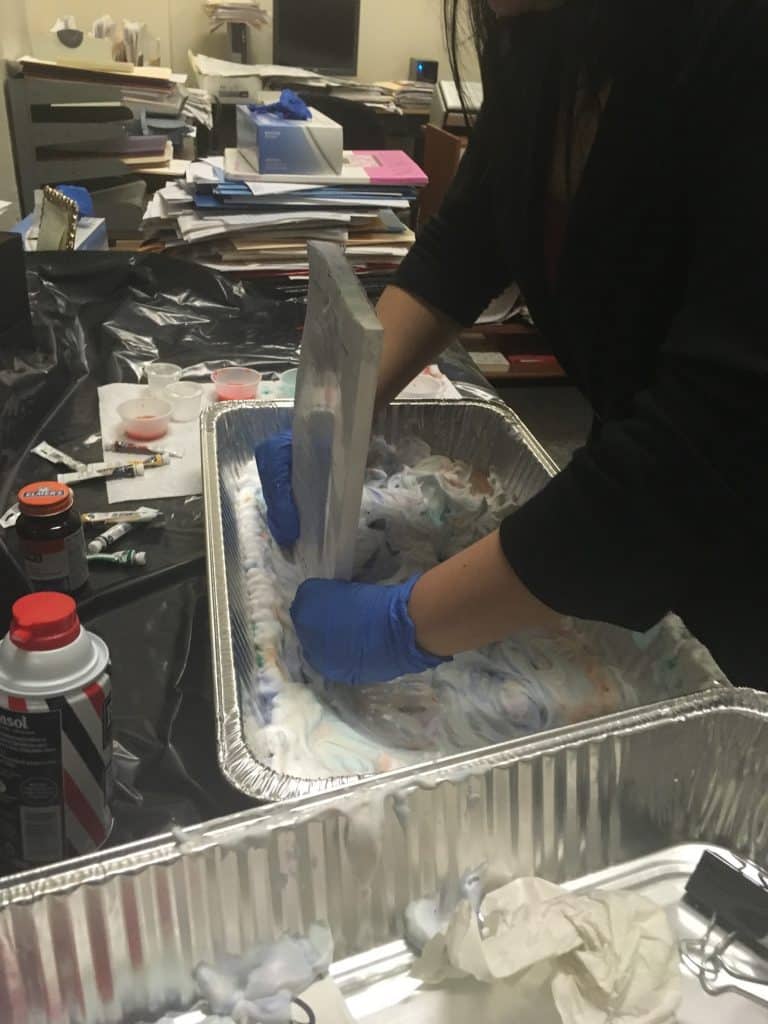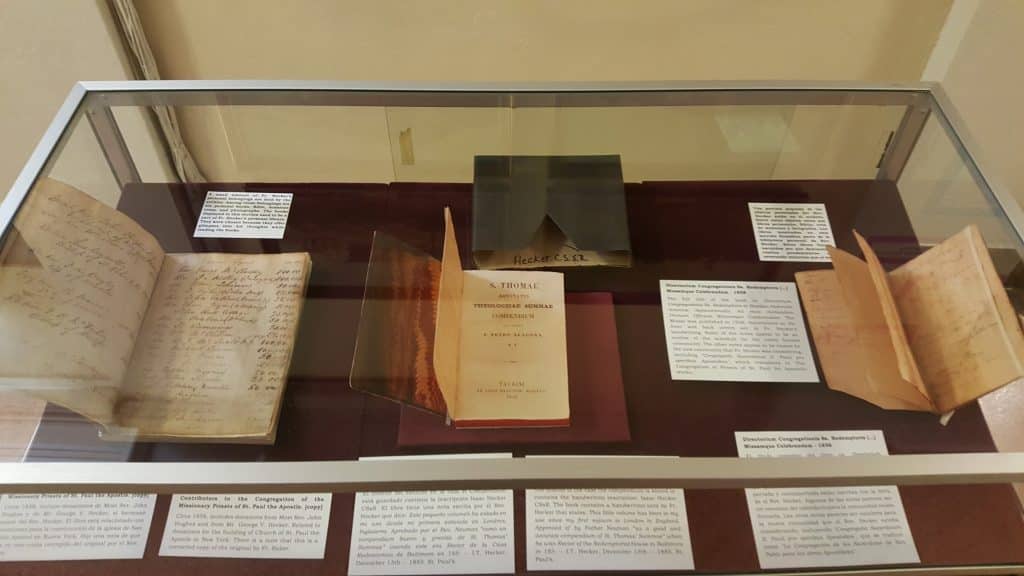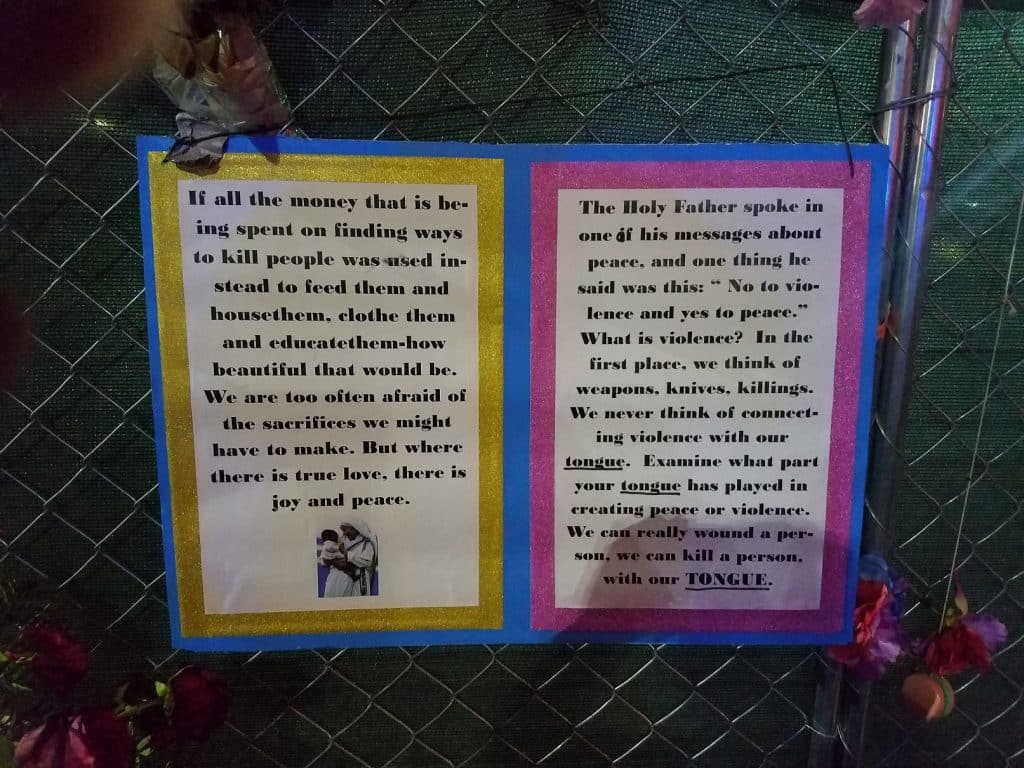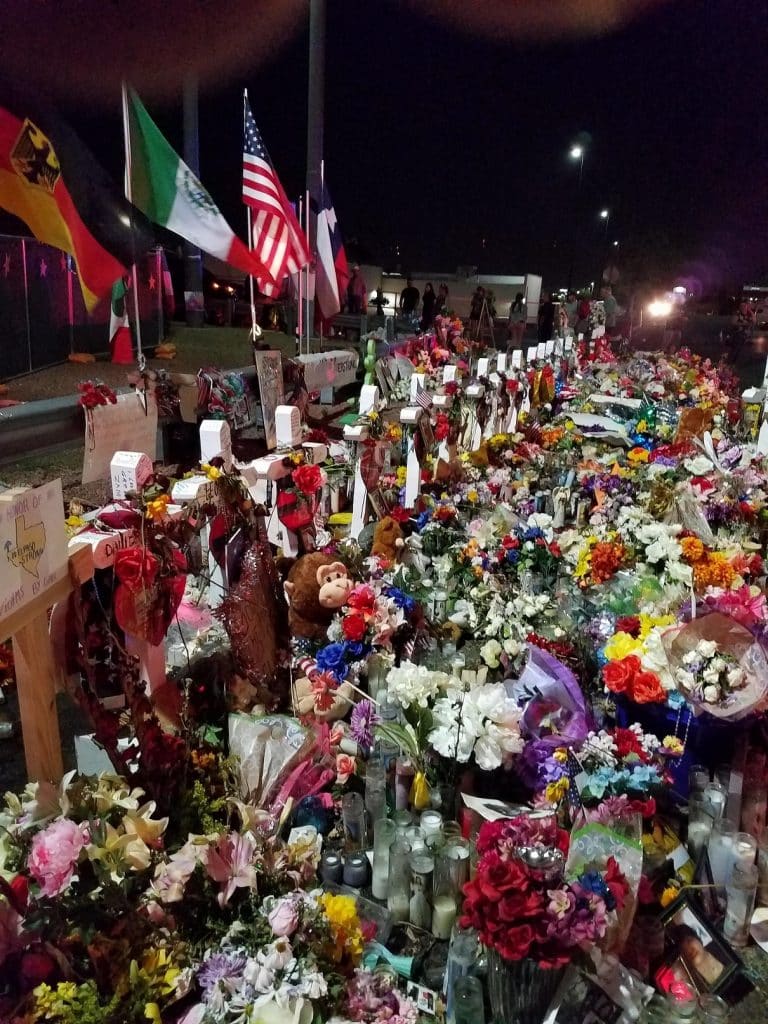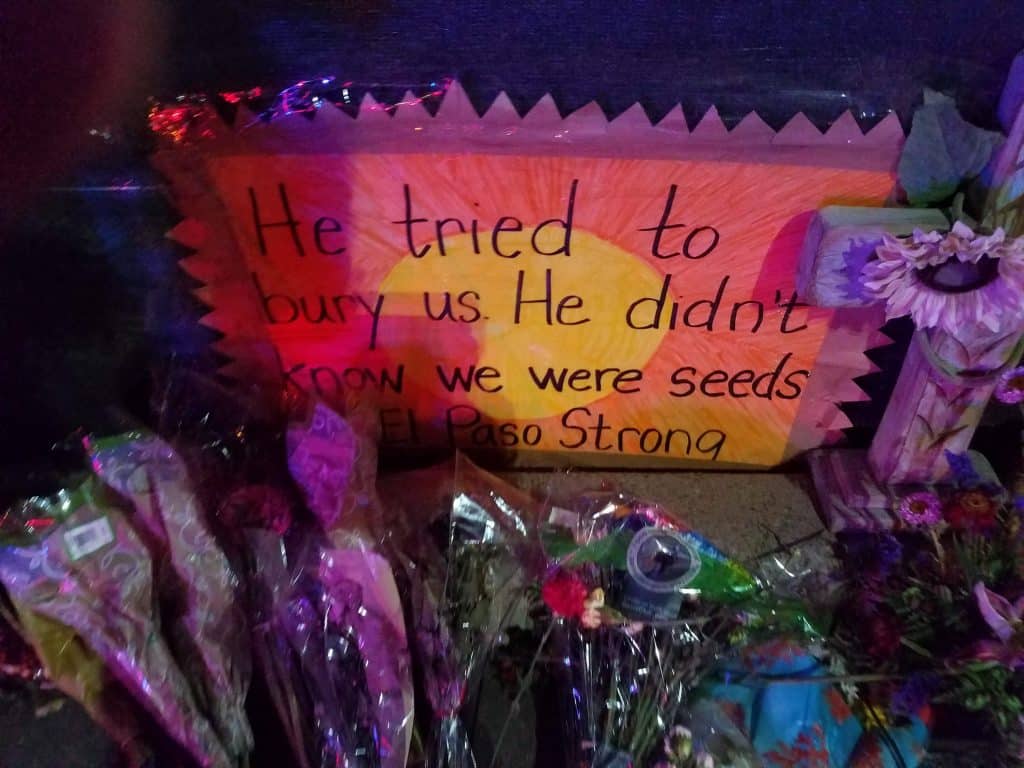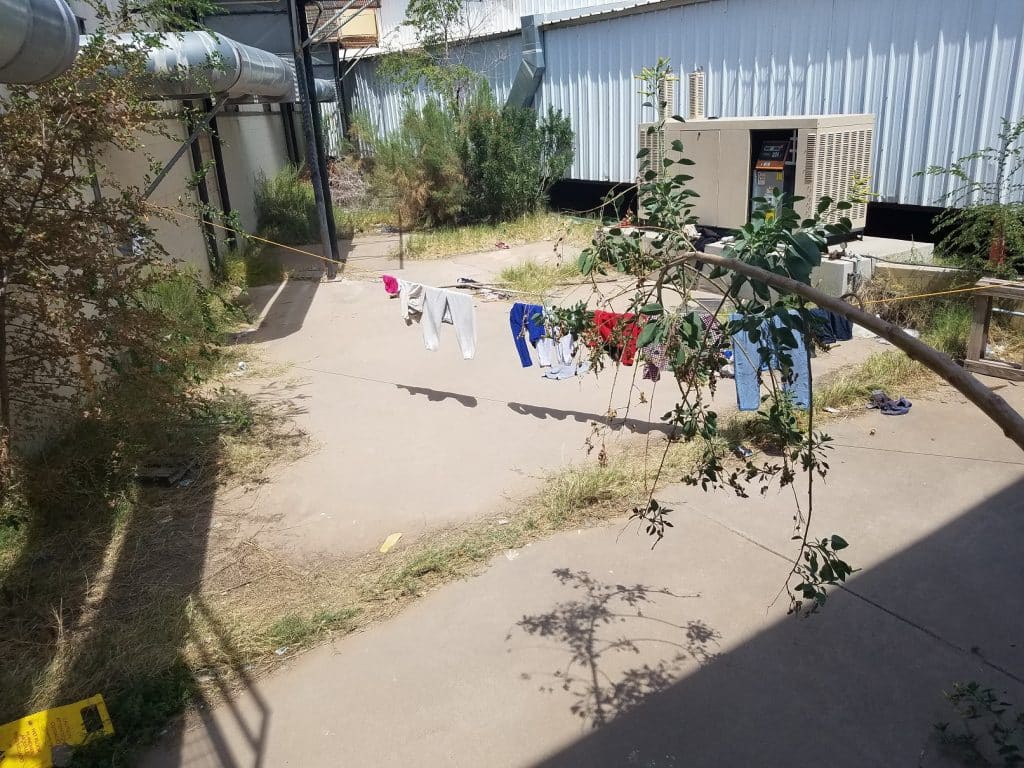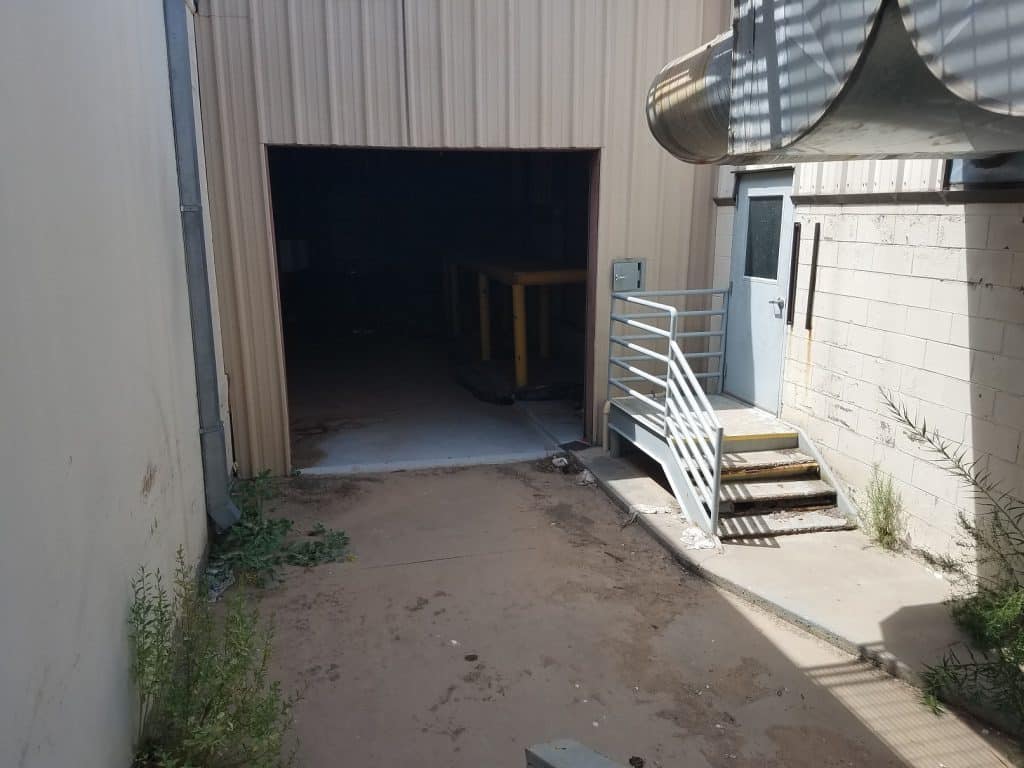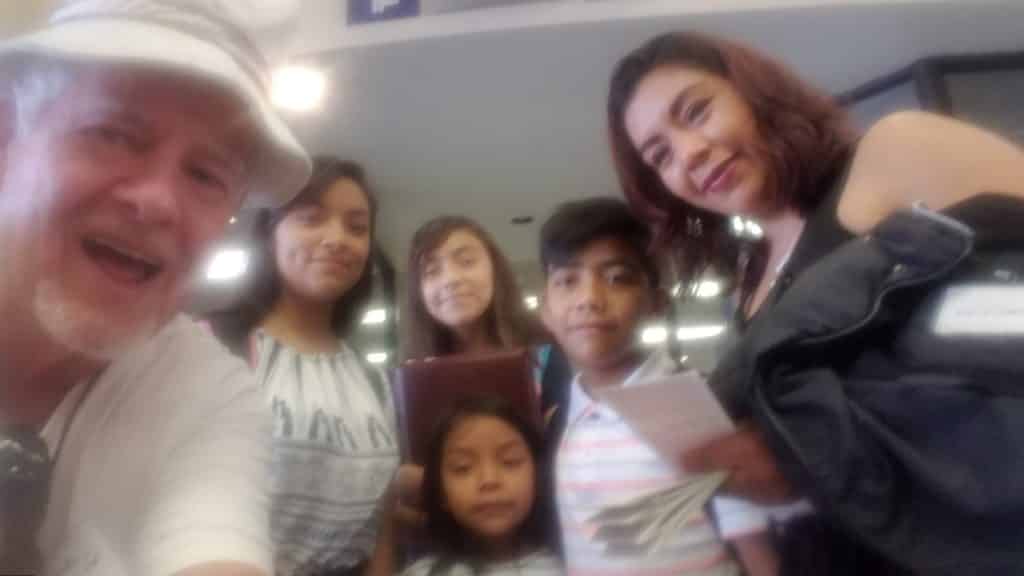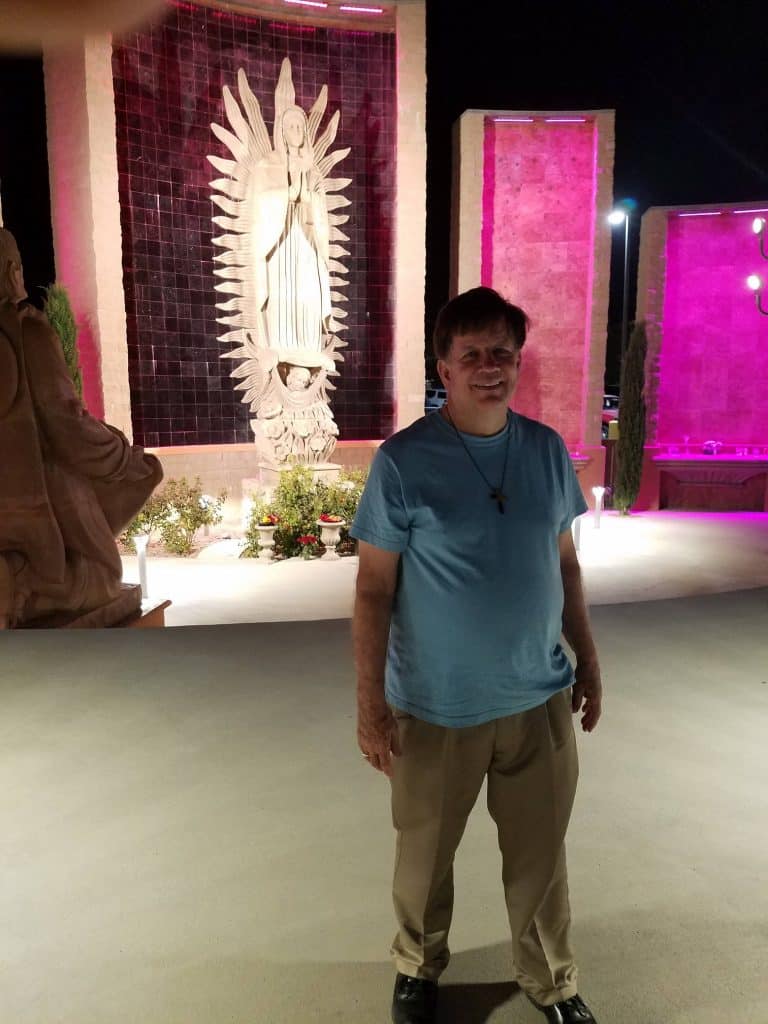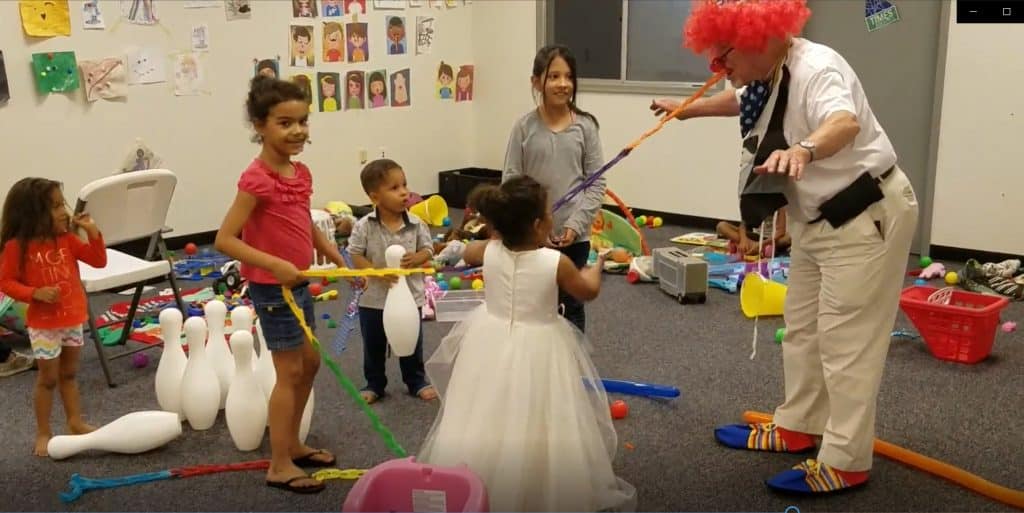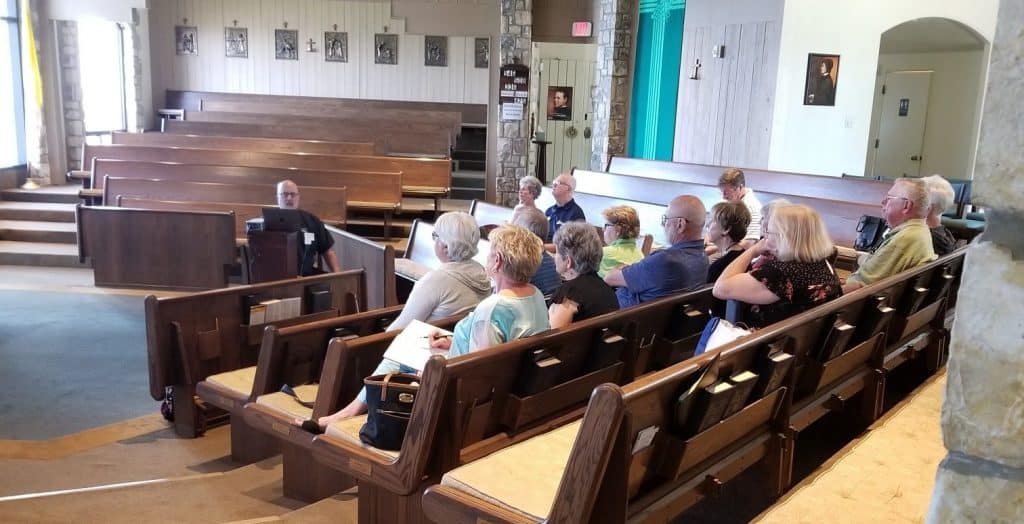October 7, 2019
Perfect for printing: Download this newsletter PDF format
- Behind the Scenes: Books from the Library of Isaac Hecker
- Isaac Hecker’s Early Journey (continued)
- Fr. Lally in El Paso (Continued)
- Renewing Promises and Updating Lists of Associates
- Upcoming Paulist Pilgrimages
- Proposed Program
- Consider submitting an article for inclusion in an upcoming issue of The Associates World
- Prayer for the Intercession of Father Isaac T. Hecker
- Contacts
- Promise
By Michelle Levy and Christina Orozco, Assistant Archivists
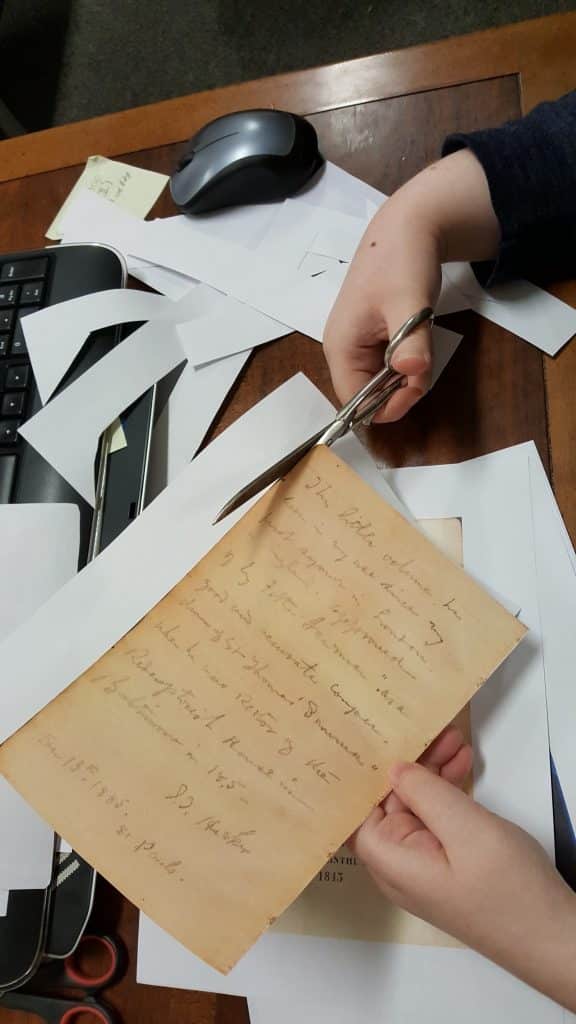
The archive has continued its plan for the exhibit Treasures from the Vault: Highlights from the collection of Servant of God Isaac T. Hecker. The second of three planned exhibits for the Bicentennial year, is now being presented: Books from the library of Rev. Isaac T. Hecker, C.S.P. It highlights select books from Fr. Hecker’s personal library. The new exhibit is currently being displayed in the first floor hallway by the mailroom, in the rectory at 59th Street.
Unlike the first exhibit, only one display case was used in order to keep the focus on the three books from the library of Fr. Hecker. The first book chronologically, is titled “S. Thomae Aquinatis Theologicae Summae Compendium by P. Petro Alagona, Edited by Tauriai”, that he had had since his time in the Redemptorist seminary and consulted throughout his life, according to the inscription he wrote in 1885. The inscription reads:
The next book is a Redemptorist Missal that was published in 1858, however the archive chose to showcase it for the exhibit because of the handwritten notations in the covers done by Fr. Hecker. The notes appear to include an outline of the schedule for the newly formed community and what appear to be ideas for names for the new community .
The last is a book of contributors to the Paulist Fathers circa 1858, leading to the construction of the Mother Church. The list of contributors included Most. Rev. John Hughes, D.D. Archbishop of New York, Rt. Rev. Thomas Connolly, Bishop of St. John’s N.B., Rt. Rev. James Roosevelt Bayley, Bishop of Newark, and Mr. George V. Hecker, co-owner of Hecker Flour Mill and older brother of Fr. Hecker. The book was chosen because while the contributors are notable, the doodles and notes on the pastedown of the book are a unique find in the collection.
Like the first exhibit, all items displayed in these exhibits are replicas from the collection of Fr. Hecker. The original objects from the collection were digitized, not in their entirety, for the exhibit. As the original books are smaller than the replicas, the pages were resized in Corel Paintshop Pro. Unlike the first exhibit, very little aging was done to the replicas in this one. The focus instead shifted to replicating the original while ensuring the handwritten text would be readable through the glass.
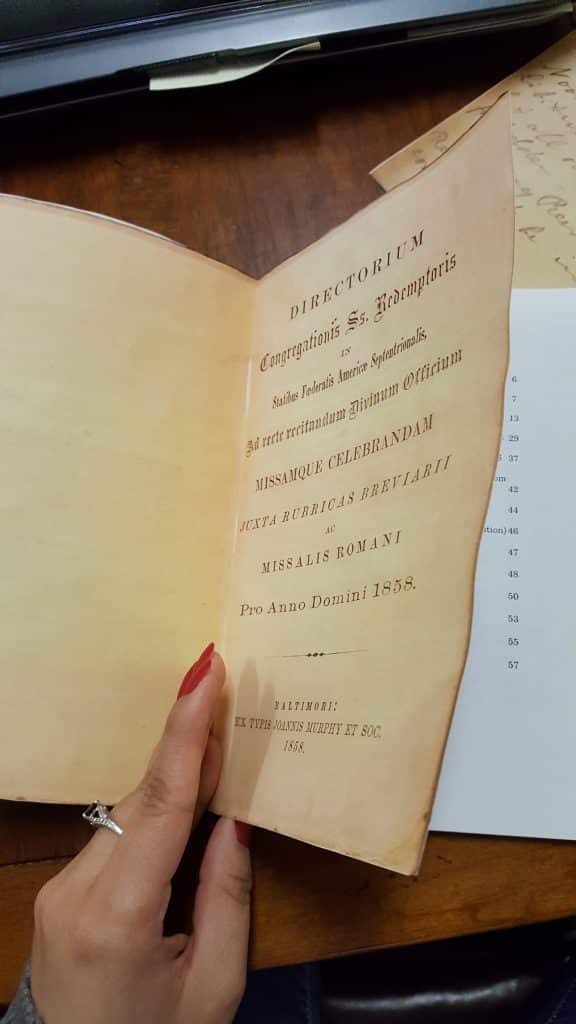
The Redemptorist Missal from 1858 for example, was scanned at a higher resolution (800 dpi). The scans were enlarged to fit an old damaged Paulist Register from 2007. The pages had to be adjusted in Corel, as the way the pages were originally scanned did not line up with the spine of the register. Then the “covers” were glued on with rubber cement. After the remaining pages were also glued to the register, the non-display pages were glued together in order to create the fanned page effect for the display. Then the edges were aged using a similar process from the previous exhibit. The final step in the replication process involved tying a piece of unbleached cotton tying string to keep the pages together. While the book of contributors was also aged to an extent, we decided to recreate the marbling of the original book. After researching for a safe, relatively chemical free and simple way to recreate the marbling technique, we discovered Artful Parent.com. We followed the steps laid out in their blog post “DIY Marbled Paper the Easy Way.” This involves using a foam based shaving cream and watercolor paint. The end result was toned down with the aging process in order to reflect the age of the original book.
For the book regarding St. Thomas Aquinas, the book edges were painted with acrylic Brilliant Red paint, combined with an orange-red toned, golden speckled powder eyeshadow. The book sleeve was also recreated, using a thin cardboard box and cutting it to fit the donated used book for the replica. A first attempt to recreate the leather cover of the box involved black carbon paper, which did not work. The second attempt involved digitally creating the texture of the leather in Photoshop and edited in Corel Paintshop Pro, and then printed and glued on top of the carbon paper. Inside, we rewrote Fr. Hecker’s signature with his then C.S.s.R. initials as Fr. Hecker had written inside of the original when he was younger. Books from the library of Rev. Isaac T. Hecker, C.S.P. will be displayed until December 2019, when it will be switched to the third and final exhibit In his own words: A Future Brighter Than Any Past. It will be on display in December 2019 to close out the bicentennial birthday exhibit series and to celebrate his actual 200th birthday. We also plan to have a post to supplement the final exhibit.
The second installment of a talk given as part of the Hecker Bicentennial Pilgrimage to Saint Patrick’s Old Cathedral: The Continuing Significance of Isaac Hecker’s Early Life and Vocational Discernment on May 17, 2019.
By Fr. Ron Franco, CSP
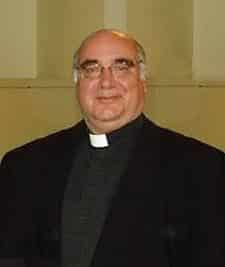
Another image at the base of Hecker’s sarcophagus shows him searching for God at Brook Farm – a Transcendentalist, utopian community, founded in West Roxbury, Massachusetts by Brownson’s friend George Ripley in 1841.
New England Transcendentalism had its roots in the Unitarian rejection of classical Calvinist doctrine – or, at least, what they understood to be classical Calvinist doctrine. According to Brook Farm’s founder, the Transcendentalists maintained “that the truth of religion does not depend on tradition, nor on historical facts, but has an infallible witness in the soul,” and that “the ultimate appeal on all moral questions, is not to a jury of scholars, a hierarchy of divines, or the prescriptions of the Creed, but to the commonsense of the human race” [10].
Such was the crowd Hecker hung out with in 1843 – first at Brook Farm and then at Bronson Alcott’s short-lived, somewhat more ascetic Fruitlands community. Hecker was a smart but not very well educated working class kid, excited to be invited into this elite circle and introduced to the charm of elite intellectual life, eagerly latching on to it, and absorbing their critique of mainline New England Protestant Christianity and of its decadence into Unitarianism, which was seen as cold, detached, and lacking in spirit. Yet, while benefiting from the opportunity explore his inner life, Hecker (perhaps because of the class difference) maintained his independence.
“I don’t know,” he wrote early in 1843, but that I will be unable to become one of the Community. In their life it is clear that they commune with different kind of objects from what I do”. Hence his search led to conclusions quite different from what the Transcendentalists believed. As he came to understand his inner spiritual experience in terms of the action of the Holy Spirit, he found himself more and more drawn to institutional Christianity and expressed himself more and more in traditional Christian language. In his Diary, he prayed, “Lord lead me to thy holy Church which I now am seeking for by the aid I hope of thy holy spirit. “ His early identification of Divine Providence with the Indwelling Holy Spirit made theological sense of the continuity between nature and grace, which he felt from his own experience, thus easing his way into the Church and laying the groundwork for his mature thought about the relationship between Church and society.
There are three things to keep in mind about Hecker’s spiritual search.
First and most important, which I think can never be stressed too much, Hecker’s spiritual search was never an end in itself. The point of seeking is to find. The Transcendentalist, he wrote “prefers talking about love to possessing it” (Diary, p. 207). Once he found what he was looking for, he resolved to devote himself to sharing it with others like himself. Quite contrary to the individualistic impulses that characterized the Transcendentalists, Hecker was (and sought to be) deeply rooted in family, community, and country and always aspired to be part of and contribute to a world bigger than himself. Hence the important part played in his conversion to Catholicism by Article 9 of the Catechism of the Council of Trent on the Communion of Saints), where he read that, “Every pious and holy action done by one member of the Church belongs to and becomes profitable to all.”. As he wrote near the end of this life: “When, in 1843, I first read in the catechism of the Council of Trent the doctrine of the communion of saints, it went right home. … The certainty of the distinctively Catholic doctrine of the union of God and men made the institution of the church by Christ exceedingly probable.”
In this formative period of Hecker’s life, he found fulfillment in the Catholic Church and never desired to look farther. Rather, he devoted himself to helping others – especially other seekers, as he himself had been – to find the truth in the Church.
Like Christian history’s most famous seeker, Saint Augustine in the late 4th century, he examined the leading intellectual and religious currents of his time, paying intense attention to his own inner spiritual sensibility, before finally finding his permanent religious home in the Roman Catholic Church. In our contemporary idiom, Hecker was “spiritual but not religious” for much of the first 25 years of his life. What was – and remains – significant about Hecker, however, was precisely that he did not remain that way. Fundamental to this formative period of his life was his recognition of the indwelling Holy Spirit of God acting in and through the questions of his soul to call him out of himself and into the Church..
The second thing to keep in mind is that Hecker was largely self-taught. He learned languages and read widely, but eclectically. Hence, his easy spontaneity and openness to exciting ideas. But his limited education would affect his ability to systematize his experiences and ideas.
Third, his knowledge and understanding of American religion – American Protestantism – was likewise limited, due to the narrow limits of his religious exposure. New England Protestantism, became his model – and really his only model – for mainline American Protestant Christianity and its decline. For most of its history, the U.S. has been a Protestant country, its founding mythology deeply identified New England Protestantism.
That said, just as the classic U.S. founding narrative inordinately privileges the influence of New England over, for example, the Spanish settlements in California, Texas, New Mexico, and Florida – and even over the other English colonies with different variants of Protestantism – Hecker’s narrative of American religion likewise overly privileged New England Protestantism American Protestantism was inevitably doomed to disappear.
His understanding of Protestantism was derived from his early experience with the Transcendentalists, and he had assimilated Transcendentalist stereotypes about Calvinism, but had little or no direct familiarity with classical Calvinism or with the writings of Calvin himself. in any case, as even so sympathetic an account as that of Paulist Father James McVann acknowledged, Hecker’s “facts and figures mostly took account of a decline in Eastern Massachusetts, without considering the strong roots of Protestantism in other parts of America, which his travels South and West should have shown him.” While so-called Mainline Protestantism may today be in serious perhaps terminal decline in the United States, Hecker’s narrow picture of American 19th and 20th-century Protestantism dramatically failed to appreciate Protestantism’s capacity to revitalize itself precisely at its own evangelical roots.
It may well be that in the 21st century even Protestantism’s more successful Evangelical form has also begun to decline. But (with individual exceptions) the predominant direction of that decline has been towards secularism, not Catholicism as Hecker had hoped.
Interestingly, while Hecker’s view of Protestantism was a somewhat abstract caricature, his actual personal experiences with those people (combined with his overall charming personality) enabled him to get along rather well with Protestants as people, which undoubtedly accounted for whatever personal success he did have in making converts.
But Protestantism as a religion always remained the problem, Hecker’s preferred explanation for the social fragmentation associated with liberal democracy. To the extent that republican institutions had for their purpose promoting national unity and the common good, Hecker boldly claimed that Protestantism was ultimately incompatible with the successful operation of American institutions and that Roman Catholicism would actually be a better fit!
(Continued in the November and December issues of Associates World.)
By Joachim Lally, CSP
El Paso Blog # 9, Aug. 29, 2019 (34th Anniversary today of making final promises with the Paulist Fathers in 1975. I made my first religious vows as a Benedictine monk in 1959. Sept 8th will be my 60th anniversary in religious life…how time flies, eh?)
I’ll be honest! I was the most tired I can remember ever being yesterday. I know this because I didn’t feel like I had enough energy to make balloon animals and do tricks for these wonderful refugee kids … I asked to leave an hour early to take the two priests here at St. Mark’s out to eat as a token of their terrific hospitality. We had some good Italian food in a moderately priced restaurant, as a welcome change to our usual Refugee Center meals of hot dogs, hamburgers, chips and rather tasteless spaghetti. As I was leaving yesterday, another large bus was bringing in many more refugees. I could have helped with the intake procedures, and I felt badly about that … but at that point I had little else to give. We had already received four other buses by that time…so the count yesterday was probably close to 175.
I had a new experience as I was asked to ride in the bus to the Greyhound station since I speak Spanish. It was good that I went as we had a special challenge with one family who spoke only Portuguese. So thankful for Google Translate! I had been with two families in particular over the last few days and had become good friends with them. It was hard saying goodbye … knowing that we would most likely never see each other again in this life. I took a few selfies with these two families and will try to attach to attach the photos that were taken at the bus station … as soon as I can learn how to attach them …
I asked the parish to help me find a wheelchair for our Refugee Center and one lady gave us one that we took to the Center yesterday morning.
The family from Honduras that l mentioned in a previous blog left on the bus yesterday. They were the ones who told me they had been waiting four months, sleeping under bridges across the border in Juarez, in order to have their petition for asylum to be approved. Hard to imagine that is how thousands are living just like this in Juarez as they wait for an opportunity to enter the USA. According to a new government proposal almost all of those applying now will (as of next Oct. 15th) not be allowed to apply. A family of four will need to have a family income of $64,000.
Please check out this article. (This is not meant to be “political”… but just GOSPEL. ) I ask you to join me in the struggle to not allow this tragedy to happen.
One of our women volunteers from NYC got a call yesterday saying that her 90 year-old father had just died. I was able to pray with her and give her a big hug. She left this morning to return home. We need more part-time volunteers here, but they have to pass a background check. Sometimes we are forced to choose whether to open the clothing room or open the room where the children can play … something they desperately need to do after all the traumas they have been through.
If you would like to consider being a part-time volunteer please go to: [email protected]
El Paso Blog # 10, Aug 30, 2019
I spent a long time in the toy room with the children, Brazilian, Mexican and Central American. As I was making balloon animals I noticed one young adult Mexican guest who was coming up with great balloon sculptures and all for the first time. I decided, then and there, to give him what I had on…my clown wig, huge polka-dot bow tie, false vest front, shoe covers, and red nose….along with many balloons and tricks … plus showing him a web site he could use to find clown face paint … and various tricks … all so that he could do clowning at birthday, baptismal parties, etc. in Denver, where he and his family were headed. With this he can make some money to provide for him and his family.
I read this morning from Richard Rohr’s Meditation for today about our interconnectedness: “quantum entanglement hints at a universe where everything is in relationship, in communion, and also where that communion can be resisted (“sin”). Both negative and positive entanglement in the universe matter, maybe even ultimately matter. Prayer, intercession, healing, love and hate, heaven and hell, all make sense on a whole new level.”
We are truly ALL ONE IN CHRIST….the only difference is between those who realize this oneness and those who don’t….and in denying our oneness, focus on all those truly unimportant differences that keep us separated and at odds with each other, through judging, prejudice, labeling and disrespect.
I went to dinner after my shift with a fellow volunteer, a priest from Chicago, Chris Glancy, CVS (Viatorian Community). During our meal he shared that he is a bishop … formerly an auxiliary bishop in Belize. Like me he wore a t-shirt. Would that more bishops were like Chris.
Tomorrow (Saturday the 31st) is my last work day at the Refugee House. I will look for a frame at Goodwill for the watercolor piece of the Lady of Guadalupe shrine here at St. Mark’s….the largest statue of Mary in the USA.
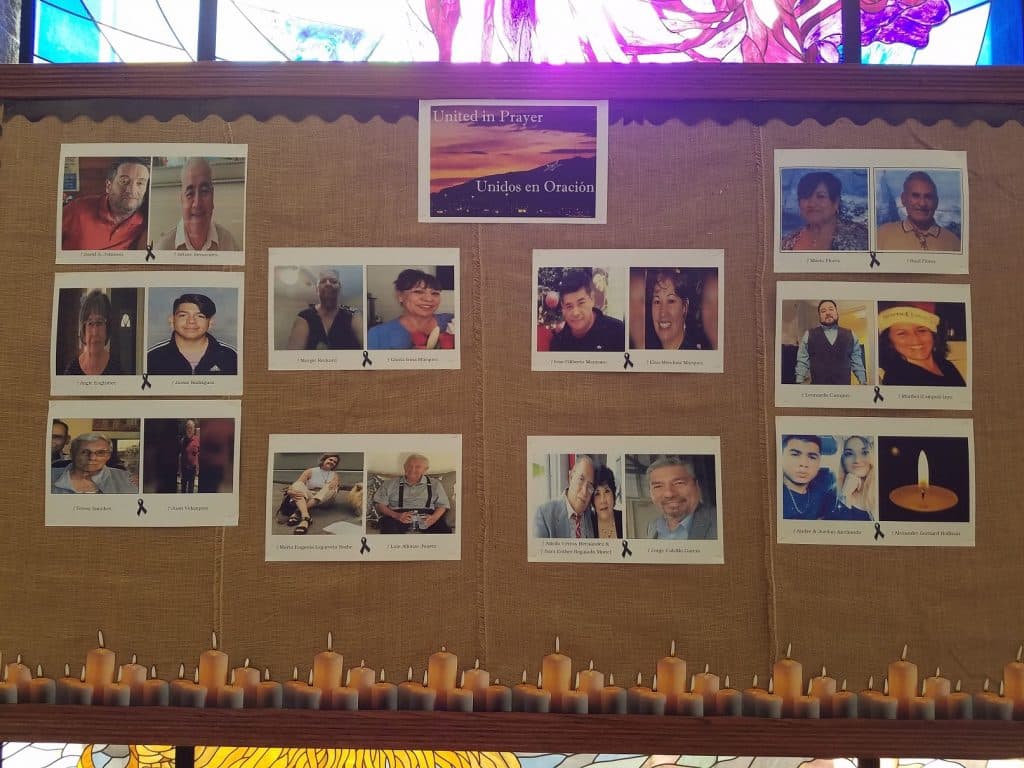
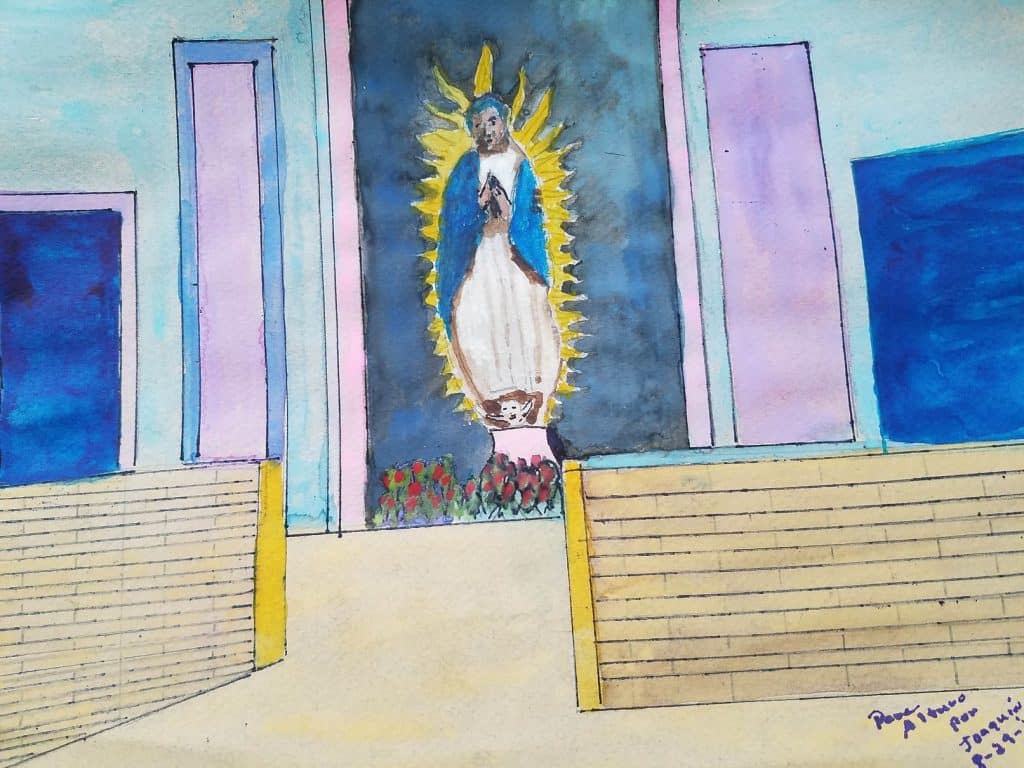

We are always happy to hear about new Associates taking promises as well as current Paulists renewing theirs. Please post notices and photos on Facebook and let us know so we can add the information in this newsletter.
When these renewals take place, it would be helpful to all if the local coordinator would send an updated list of Associates to Kathleen Lossau so she can keep our contact list current. Please email contact information for those taking first promises and those renewing promises as well as a list of those who have opted not to renewing promises to Kathleen Lossau at [email protected].
In September the Austin and Horseshoe Bay associates held a joint retreat here in Central Texas. The retreat was on “Rediscovering the Joy of the Gospel” and was led by Fr. Larry Rice (from the University Catholic Center at the University of Texas). The retreat was held on Saturday September 21 and was a fun filled, reflective and joyful time.
Visits to the Vatican Museum, Catacombs of Santa Priscillla, Tre Fontane, and St. Paul’s Outside the Walls. Possibility of private audience with Pope Francis or Mass with Pope Francis. Daily conference on reconciling and welcoming returning Catholics.Pilgrimage limited to 20 registrants. Full details will be posted here and will be e-mailed to Landings International and Paulist Pilgrimages newsletter subscribers as they become available.
An 11-day pilgrimage with Paulist Father Thomas A. Kane on an unforgettable pilgrimage to Eastern Europe. See the once-a-decade performance of the world-famous Oberammergaupassion play and explore the breathtaking cities of Budapest, Prague, and Vienna.
It is with great pleasure and excitement that I invite you to join us on our Splendors of Eastern Europe and Oberammergau pilgrimage with a once-in-a-lifetime opportunity to attend the world famous Passion Play in 2020. The villagers of Oberammergau first performed the play in 1634 in fulfillment of their promise to God for sparing them from the Black Plague, and it has been presented there every ten years since then.
Our journey will take us to some of Europe’s most interesting countries including the Czech Republic, Hungary, Austria and Germany. The scenery is absolutely spectacular as we travel through the plains and valleys of the magnificent Eastern European countryside. The points of interest are very diverse, spotlighting historical places and natural wonders. We will also celebrate the liturgy in some wonderful churches along the way.
In addition to our time in Oberammergau, we will have the opportunity to enjoy visits to Prague, the beautiful 1,000-year-old capital of the Czech Republic; Budapest, Hungary’s enchanting capital on the Danube River; Vienna, Austria’s elegant city with an old world ambience and a rich musical heritage; and Munich, the capital of Bavaria.
The price of our tour includes roundtrip airfare, first class/select hotels and guesthouses in Oberammergau, most meals, first class admission tickets for the Passion Play, the services of a professional tour director and sightseeing in a deluxe motorcoach.
Submitted by Mike Kallock, CSP.
( As we near the end of our celebrations of the Bicentennial Year of Hecker’s Birth, we remind you to follow the basic theme for the designated month as taken from Isaac Hecker for Every Day edited by Ronald Franco, CSP This month’s quote from the writings of Father Hecker is taken directly from Father Franco’s October Day One.)
OPENING PRAYER:
Come Holy Spirit, fill the hearts of your faithful and enkindle in them the fire of your love. Send forth your Spirit and they shall be created. And you shall renew the face of the earth. O God, who, by the light of the Holy Spirit, instructed the hearts of the faithful, grant that, by the same Spirit, we may know what is right and always rejoice in the Spirit’s consolation, through Christ our Lord. Amen.
THEME: EVANGELIZATION
FROM THE WRITINGS OF FATHER HECKER:
We cannot even preserve the faith among Catholics in any better way than by advancing it among our non-Catholic brethren. Indeed, simply to preserve the faith it is necessary to extend it. It is a state of chronic disease for men to live together and not endeavor to communicate their respective good fortunate. A Catholic without a mission to his non-Catholic fellow-citizens in these times, and when only a small portion of the human race has the true religion, is only half a Catholic. (“The Human Environments of the Catholic Faith,” July 1886: The Catholic World, 468)
EXCERPTS FROM THE PAULIST MISSION DIRECTION STATEMENT 2002
In the new millennium, the Paulist Fathers and their lay colleagues continue to draw upon the legacy of our founder Isaac Thomas Hecker. Attentive to the movement of the Holy Spirit in our midst, and faithful to the example of St. Paul, we recommit ourselves to evangelization in all its forms as our central mission. This apostolic vision must recognize the multicultural reality of our society, the diversity of our North American religious experience, and the value of Paulists and laity working together as partners in the transformative work of Spirit-driven ministry. (The first paragraph from the MDS.)
The Paulist Community, meeting in General Assembly in 2002, affirms the central mission of evangelization and its related ministries of Christian unity, reconciliation, and interreligious relations. Therefore, we dedicate ourselves with our lay and religious associates to advance these missionary endeavors. (The last paragraph of the MDS.)
SHARE WITHIN YOUR GROUP:
What do you like, dislike about Hecker’s understanding of Evangelization for his time? How do you see the present Paulist understanding of Evangelization as expressed in the Paulist Mission Direction Statement as expanding on and also differing from Hecker’s?
CLOSING PRAYER:
Send the fire of your Holy Spirit deep within us, Lord, so that we can serve you with devotion and please you with our hearts, minds, and actions. We pray this through Christ our Lord. Amen
The Associates World welcomes submissions of articles or information about upcoming events. These should be sent as Microsoft Word documents and attached to an email to [email protected]. Except for reporting on late-month events, we would appreciate receiving submissions by the 20th of the month before the publication date. Please contact editors Kathleen Lossau ([email protected]) or Denis Hurley ([email protected]) with questions or article proposals.
In September the Austin and Horseshoe Bay associates held a joint retreat here in Central Texas. The retreat was on “Rediscovering the Joy of the Gospel” and was led by Fr. Larry Rice (from the University Catholic Center at the University of Texas). The retreat was held on Saturday September 21 and was a fun filled, reflective and joyful time.
<PUT RETREAT PICTURE HERE>
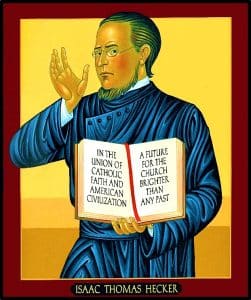
Look upon us this day, with compassion and hope. Hear our prayer. We ask that through the intercession of Father Hecker your servant, you might grant us (state the request).
We ask this in the name of Jesus Christ, Your Son, Our Lord, who lives and reigns with You and the Holy Spirit. One God, forever and ever. Amen.
When you pray this prayer, and if you believe that you have received any favors through Hecker’s intercession, please contact the Office of the Cause for Canonization of Servant of God, Isaac Hecker at [email protected]. Visit the web site: isaachecker.org to learn more about his life and the cause for his canonization.
Paulist Associates National Director
Mike Kallock, CSP
Paulist General Office
New York, NY 10023
Board Members
Carol Wagner Williams
Tuscon, AZ
Frank Desiderio, C.S.P.
Katherine Murphy Mertzlufft
Columbus, OH
Joe Scott, CSP
David Rooney
Chicago, IL
Mary Sullivan
Boston, MA
I believe that I am drawn by the Holy Spirit to the spirituality and qualities of the Paulist Community. I have discerned both by prayer and study that God calls me to become associated with the Paulists. I promise that I will pray for the works of the Paulist Society, meet with others, who are also members of the Paulist Associates, for spiritual sharing and formation; and I seek to embody the apostolic qualities of the Paulists in my daily life.
Attentive to the Holy Spirit and faithful to the example of St. Paul and the charism of Father Isaac Hecker, I commit myself for one year of membership in the Paulist Associates.
